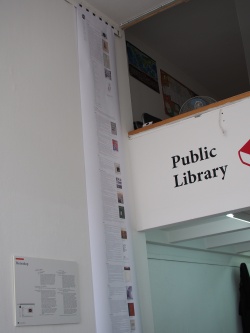

Dec 9, 2013 - This is why Kenneth Frampton – to take one example – composed his Modern Architecture: A Critical History as a loose set of stories.5. Frampton is the author of numerous essays on modern and contemporary architecture, and has served on many international juries for architectural awards and building commissions. Jedi academy skins single player download. In addition to Modern Architecture: A Critical History, his publications include Studies in Tectonic Culture, Labour, Work and Architecture, and A Genealogy of Modern Architecture: Comparative Critical Analysis of Built Form.
Contents • • • • • • • • • Kenneth Frampton [ ] In 'Towards a Critical Regionalism: Six points for an architecture of resistance', Frampton recalls 's 'how to become modern and to return to sources; how to revive an old, dormant civilization and take part in universal civilization'. According to Frampton's proposal, critical regionalism should adopt modern architecture, critically, for its universal progressive qualities but at the same time value should be placed on the geographical context of the building.
Emphasis, Frampton says, should be on topography, climate, light; on tectonic form rather than on scenography (i.e. Painting theatrical scenery) and should be on the sense of touch rather than visual sense. Frampton draws on for his argument. Alvar Aalto, Saynatsalo Town Hall (1952), Finland: the grass steps appeal to the tactile sense. Two examples Frampton briefly discusses are. In Frampton's view, Utzon's (1973–6), near Copenhagen is a self-conscious synthesis between universal civilization and world culture. This is revealed by the rational, modular, neutral and economic, partly prefabricated concrete outer shell (i.e.
Universal civilization) versus the specially-designed, 'uneconomic', organic, reinforced concrete shell of the interior, signifying with its manipulation of light sacred space and 'multiple cross-cultural references', which Frampton sees no precedent for in Western culture, but rather in the Chinese roof (i.e. World culture).

In the case of Aalto, Frampton discusses the red brick (1952), where, he argues, there is a resistance to universal technology and vision, affected by using the tactile qualities of the building's materials. He notes, for instance, feeling the contrast between the friction of the brick surface of the stairs and the springy wooden floor of the council chamber. Curtis and Suha Ozkan [ ] There have been two different perceptions of Regionalism in architecture. One of which is of Western writers, like, whose definitions are not encompassing enough to analyse architectural styles especially in the last two centuries in the Islamic countries, like Iran. However, Ozkan's definition of Regionalism is more objective. Alexander Tzonis and Liane Lefaivre [ ] According to and, critical regionalism need not directly draw from the context; rather elements can be stripped of context but used in unfamiliar ways. Here the aim is to make evident a disruption and loss of place, that is already a, through reflection and self-evaluation.
- Author: admin
- Category: Category

Dec 9, 2013 - This is why Kenneth Frampton – to take one example – composed his Modern Architecture: A Critical History as a loose set of stories.5. Frampton is the author of numerous essays on modern and contemporary architecture, and has served on many international juries for architectural awards and building commissions. Jedi academy skins single player download. In addition to Modern Architecture: A Critical History, his publications include Studies in Tectonic Culture, Labour, Work and Architecture, and A Genealogy of Modern Architecture: Comparative Critical Analysis of Built Form.
Contents • • • • • • • • • Kenneth Frampton [ ] In 'Towards a Critical Regionalism: Six points for an architecture of resistance', Frampton recalls 's 'how to become modern and to return to sources; how to revive an old, dormant civilization and take part in universal civilization'. According to Frampton's proposal, critical regionalism should adopt modern architecture, critically, for its universal progressive qualities but at the same time value should be placed on the geographical context of the building.
Emphasis, Frampton says, should be on topography, climate, light; on tectonic form rather than on scenography (i.e. Painting theatrical scenery) and should be on the sense of touch rather than visual sense. Frampton draws on for his argument. Alvar Aalto, Saynatsalo Town Hall (1952), Finland: the grass steps appeal to the tactile sense. Two examples Frampton briefly discusses are. In Frampton's view, Utzon's (1973–6), near Copenhagen is a self-conscious synthesis between universal civilization and world culture. This is revealed by the rational, modular, neutral and economic, partly prefabricated concrete outer shell (i.e.
Universal civilization) versus the specially-designed, 'uneconomic', organic, reinforced concrete shell of the interior, signifying with its manipulation of light sacred space and 'multiple cross-cultural references', which Frampton sees no precedent for in Western culture, but rather in the Chinese roof (i.e. World culture).

In the case of Aalto, Frampton discusses the red brick (1952), where, he argues, there is a resistance to universal technology and vision, affected by using the tactile qualities of the building's materials. He notes, for instance, feeling the contrast between the friction of the brick surface of the stairs and the springy wooden floor of the council chamber. Curtis and Suha Ozkan [ ] There have been two different perceptions of Regionalism in architecture. One of which is of Western writers, like, whose definitions are not encompassing enough to analyse architectural styles especially in the last two centuries in the Islamic countries, like Iran. However, Ozkan's definition of Regionalism is more objective. Alexander Tzonis and Liane Lefaivre [ ] According to and, critical regionalism need not directly draw from the context; rather elements can be stripped of context but used in unfamiliar ways. Here the aim is to make evident a disruption and loss of place, that is already a, through reflection and self-evaluation.